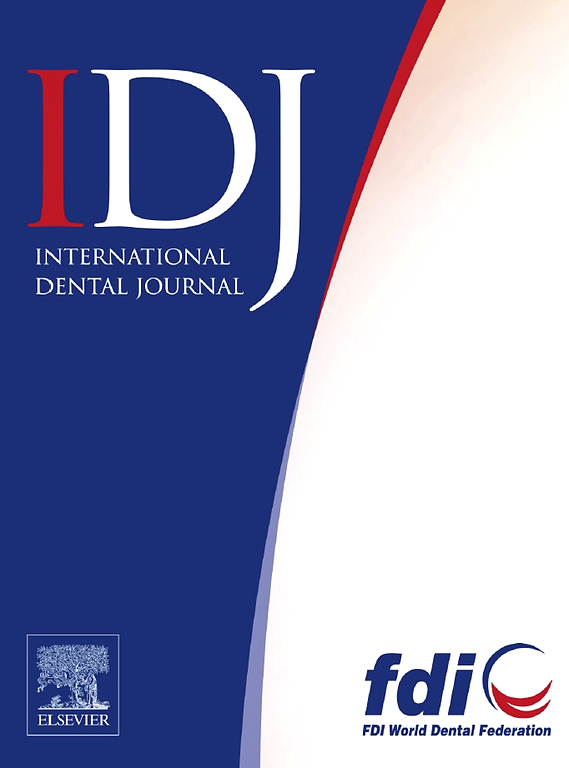寻求庇护者和难民的口腔健康相关生活质量:系统回顾
IF 3.7
3区 医学
Q1 DENTISTRY, ORAL SURGERY & MEDICINE
引用次数: 0
摘要
寻求庇护者和难民(asr)的口腔健康状况往往比东道国最弱势人群差。关于asr患者口腔健康相关生活质量(OHRQoL)的信息有限。本系统综述对ASRs人群OHRQoL的现有研究进行了综合。在EBSCOhost (Dentistry & Oral Sciences Source)、PubMed、Scopus和谷歌Scholar Advanced search中进行了系统检索,没有语言限制。两名研究人员独立进行研究选择和数据提取,任何差异通过与第三名研究人员讨论解决。纳入研究的引用和参考文献也被仔细审查,以确定其他相关文献。纳入标准包括使用至少一种OHRQoL工具评估asr OHRQoL的实验或观察性研究。在确定的141项研究中,有10项研究符合纳入标准。所有纳入的研究都主要调查了难民人口,没有一项研究专门针对没有难民身份的寻求庇护者。这些研究发表于2014年至2025年间,在美国、土耳其、印度、新西兰、挪威、约旦、希腊北部、奥地利和南澳大利亚进行,共有1844名参与者,年龄在4至76岁之间。10项研究中有5项(50%)通过使用口腔健康影响概况-14来测量OHRQoL。大多数难民来自叙利亚,阿拉伯语OHRQoL工具是最常用的(33.3%,7/21)。在纳入的研究中,身体疼痛领域是OHRQoL最常受影响的领域,范围从28.8%到70.4%。这篇综述强调,难民在OHRQoL方面经历了严重的损害,其中身体疼痛领域受到的影响最大。目前还没有专门针对没有难民身份的寻求庇护者的ohhrqol研究,这突出表明需要进行进一步研究以解决这一证据差距。本文章由计算机程序翻译,如有差异,请以英文原文为准。
Oral Health-Related Quality of Life among Asylum Seekers and Refugees: A Systematic Review
Asylum seekers and refugees (ASRs) often experience poorer oral health outcomes than the most disadvantaged populations in their host countries. Limited information is available on the oral health-related quality of life (OHRQoL) of ASRs. This systematic review synthesized existing research on OHRQoL among ASRs populations. A systematic search was conducted in EBSCOhost (Dentistry & Oral Sciences Source), PubMed, Scopus, and Google Scholar Advanced Search, without language restrictions. Two researchers independently performed the study selection and data extraction, with any discrepancies resolved through discussion with a third researcher. The citations and references of the included studies were also scrutinized to identify additional relevant literature. The inclusion criteria encompassed experimental or observational studies that evaluated OHRQoL among ASRs using at least one OHRQoL tool. Out of 141 identified, 10 studies met the inclusion criteria. All included studies primarily examined refugee populations, and none focused exclusively on asylum seekers without refugee status. These studies, published between 2014 and 2025, were conducted in United States, Turkey, India, New Zealand, Norway, Jordan, Northern Greece, Austria, and South Australia, with 1844 participants aged 4 to 76 years. Five out of ten studies (50%) measured OHRQoL by using the Oral Health Impact Profile-14. Most of the refugees were from Syria, and Arabic-language OHRQoL tools were the most commonly used (33.3%, 7/21). Physical pain domain emerged as the most frequently impacted domain of OHRQoL, ranging from 28.8% to 70.4%, across the included studies. This review highlights that refugees experience substantial impairments in OHRQoL, with the physical pain domain being the most affected. No studies on OHRQoL focusing exclusively on asylum seekers without refugee status are currently available, highlighting the need for future research to address this evidence gap.
求助全文
通过发布文献求助,成功后即可免费获取论文全文。
去求助
来源期刊

International dental journal
医学-牙科与口腔外科
CiteScore
4.80
自引率
6.10%
发文量
159
审稿时长
63 days
期刊介绍:
The International Dental Journal features peer-reviewed, scientific articles relevant to international oral health issues, as well as practical, informative articles aimed at clinicians.
 求助内容:
求助内容: 应助结果提醒方式:
应助结果提醒方式:


